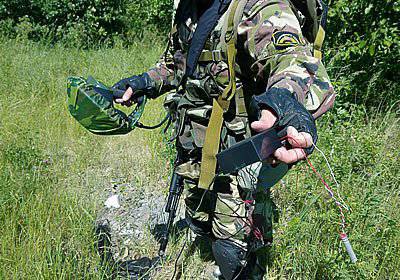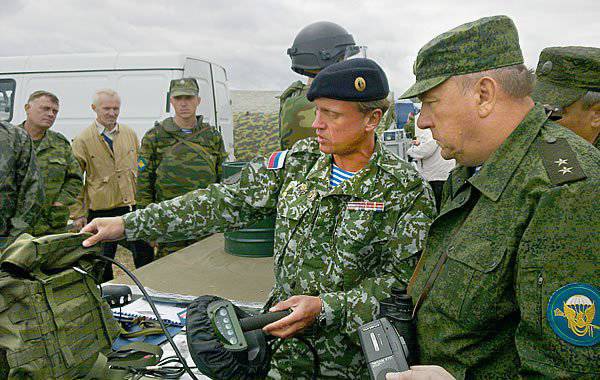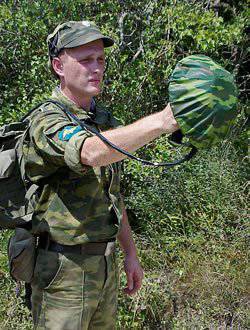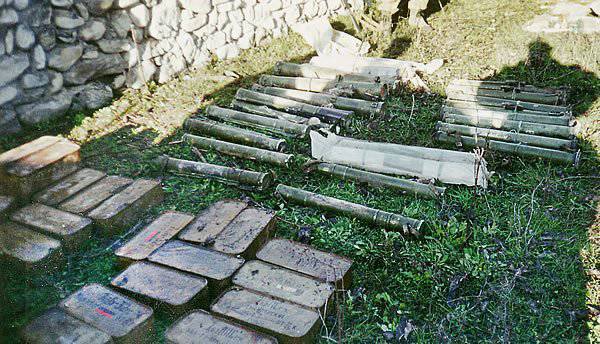Russia has created a unique means of detecting explosive devices
 The Closed Joint-Stock Company “Protection Group - YUTTA” specializes in the development, manufacture and sale of non-linear radars (NL) for various purposes, remote detection of explosive components (WU), complexes for detecting technical channels of information leakage, means and complexes for protecting confidential information from unauthorized access.
The Closed Joint-Stock Company “Protection Group - YUTTA” specializes in the development, manufacture and sale of non-linear radars (NL) for various purposes, remote detection of explosive components (WU), complexes for detecting technical channels of information leakage, means and complexes for protecting confidential information from unauthorized access.All activities are licensed in accordance with the legislation of the Russian Federation. Products supplied to the customer have the necessary certificates. The company itself is certified according to ISO 9001.
A special achievement of the company is the development of a family of exclusive NL series "Kite", intended for remote detection of VU, containing in its composition radio-electronic components or ready-made destructive elements. The devices are made in accordance with the requirements of the "military" GOSTs and are designed for military operation.

This category of engineering intelligence has no direct foreign analogues. In Russia, an analogue of the Korshun family is the INM products “Summer” and “Summer M”, developed during development work in the interests of the Ministry of Defense back in the 90s. To date, there are serious problems in the organization of the mass production of these products, these devices have the worst search and operating parameters, higher cost.
 Application NL "Kite-3M".
Application NL "Kite-3M".NL of the Kite family are accepted for supply in the Engineer Forces of the Ministry of Defense of Russia under the letter INVU (Seeker of non-contact explosive devices), subunits of the FSB, Ministry of Internal Affairs. For the airborne special purpose units, the FSB has developed and serially produced an adapted version of the NL.
Currently undergoing a series of state tests in the units of the Ministry of Internal Affairs the product "Kite-3M". This device, while maintaining the optimal design of the INVU, has improved search characteristics, which allow detecting VU with electronic detonators at ranges up to 15-18 meters from the operator.
The problem of timely and safe detection of VU every day, with each resonant undermining becomes more acute. According to the extensive world practice, according to the state of the art in this field, searching for explosive devices using nonlinear radars is the most effective and safe.
Virtually all currently used VU, regardless of the method of their manufacture, contain components that have a non-linear effective dispersion surface (NEPR). And this allows you to detect them using NL. It can even be argued that the presence of a characteristic NEPR in the object under investigation is the same weighty symptom of VU as the presence of an explosive charge. Even anti-personnel and anti-tank mines installed in the ground with contact mechanical sensors of the target for this feature are detected by the Kite-3М devices.
It should be noted that this product is the only engineering reconnaissance tool in the world designed to drop by parachute into the cargo container GK-30 and transport under water to a depth of 14 m in an airtight container. Currently, Korshun-3M devices are in trial operation in the airborne units.
In addition to the development and manufacture of portable devices, the company CJSC "Protection Group - YUTTA" actively participates in development projects aimed at creating NL placed on mobile carriers. Thus, in 2010, a prototype of the Minesweeper complex was manufactured and handed over to the customer, designed for remote search of high-pressure equipment on large areas in the presence of interference.
Products manufactured by ZAO Zashchity-YUTTA CJSC within the framework of the state defense order are subject to military acceptance. Specialists of the company travel to customer departments, train personnel, improve teaching materials.

Nonlinear radars developed and manufactured by this company are in steady demand in foreign markets, exported to India, Israel, China, NATO countries.
The research and production, organizational and personnel potential of an enterprise make it possible to consider it as a long-term and reliable partner of state structures of Russia.
Information